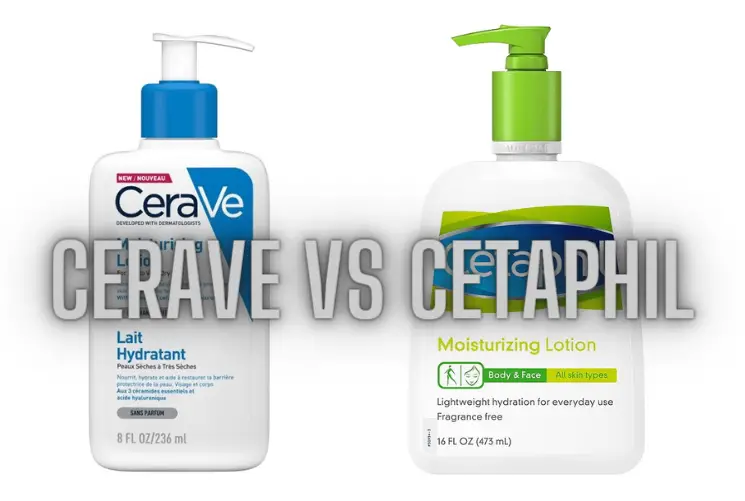When it comes to skincare, the plethora of options available can be overwhelming. Among the many brands crowding the shelves, two names often stand out for their gentle formulations and dermatologist recommendations: CeraVe and Cetaphil. Both brands have built a reputation on creating skincare products that cater to a variety of skin types and conditions.
This article delves into the world of CeraVe and Cetaphil, comparing their philosophy, product offerings, key ingredients, and effectiveness to help you make an informed decision on which brand might be best for your skincare needs.
Brand Philosophy and History
CeraVe was founded in 2005 and has established itself as a brand synonymous with skincare enriched with ceramides. Ceramides are lipids that help form the skin’s barrier and help the skin retain moisture. The brand’s mission is to provide affordable, accessible, and dermatologist-recommended products that strengthen and moisturize the skin.
Cetaphil, on the other hand, has been a staple in the skincare industry since 1947. The brand is known for its simplistic approach to skincare, focusing on gentle, effective cleansing and moisturizing products. Cetaphil caters to sensitive skin and is often recommended by dermatologists for its mild and non-irritating formulas.
Key Ingredients and Benefits
The key ingredients in CeraVe and Cetaphil products are what set them apart and cater to different skin needs.
Ceramides: CeraVe is known for ceramides, which are crucial for maintaining the skin’s natural barrier and retaining moisture. The inclusion of ceramides in almost all their products ensures that the skin barrier is supported across their line.
Hyaluronic Acid: Found in many CeraVe products, hyaluronic acid is a powerful humectant that can hold up to 1000 times its weight in water, thus providing essential hydration that can benefit all skin types.
Niacinamide: CeraVe products often include niacinamide, a form of vitamin B3 that can help calm inflammation, reduce redness, and improve the skin’s barrier function.
Glycerin: Cetaphil includes glycerin in many of its formulations, which like hyaluronic acid, is a humectant that draws moisture into the skin. It’s particularly beneficial in their lotions and creams, offering hydration without heaviness.
Fatty Alcohols: Both brands use fatty alcohols like cetyl and stearyl alcohol in their moisturizers to provide a creamy texture that doesn’t clog pores or irritate the skin.
Effectiveness and Skin Type Suitability
When determining the effectiveness of CeraVe and Cetaphil, it’s important to consider the skin type and concern each brand is addressing.
For Dry Skin: CeraVe’s moisturizers, with their ceramide-rich formulations, are excellent for dry to very dry skin types, providing long-lasting hydration and helping to restore the skin’s natural barrier.
For Sensitive Skin: Cetaphil’s gentle cleansers and moisturizers are perfect for sensitive skin, as they are designed to cleanse and moisturize without causing irritation.
For Acne-Prone Skin: CeraVe offers products with salicylic acid that are formulated to help clear acne, while Cetaphil has oil-free moisturizers that hydrate the skin without contributing to breakouts.
For Eczema and Psoriasis: Both brands have products that are accepted by the National Eczema Association, with CeraVe offering a specialized Eczema Creamy Oil and Cetaphil providing a Restoraderm line tailored for eczema-prone skin.
User Experience and Accessibility
When considering the overall user experience, factors such as product texture, packaging, and ease of use come to the forefront.
CeraVe presents a more contemporary and medicinal aesthetic in its packaging, often featuring pump dispensers or tubes that are conducive to maintaining product hygiene and stability. The brand’s lotions and creams are generally well-absorbed and leave a hydrating, non-greasy finish, appealing to those who prefer a more ‘active’ skincare routine with targeted ingredients.
Cetaphil, with its no-frills packaging, appeals to users seeking simplicity and reliability. The brand favors straightforward flip-top caps and squeeze bottles, which, while not as sophisticated as pumps, are practical and user-friendly. Cetaphil products typically have a lighter consistency that suits those who favor a minimalist skincare approach or have extremely sensitive skin that may react to more complex formulations.
Accessibility is a strong point for both brands. CeraVe and Cetaphil products are widely available in drugstores, supermarkets, and online platforms, making them easy to find and purchase. Their price points are also similar, making them affordable options for consumers looking for effective skincare without a luxury price tag.
Both brands accommodate a range of preferences and needs, offering unscented options and formulas for various skin concerns. This ensures that whether you’re looking for a basic moisturizer or a more specialized treatment, both CeraVe and Cetaphil are likely to have a product that fits the bill.
Final Thoughts
Ultimately, the choice between CeraVe and Cetaphil may come down to personal preference regarding texture, specific skin concerns, and the importance of certain active ingredients in one’s skincare routine. Both brands have secured their places in the skincare regimes of many, with their reputations for gentleness and effectiveness making them mainstays in the industry.
References
- 1Source.com: Ingredient Decoder
- PubChem
- EWG

